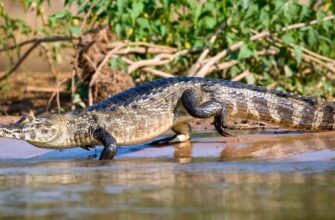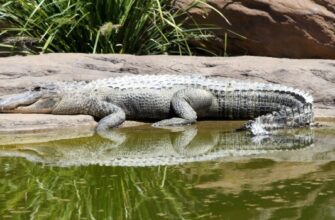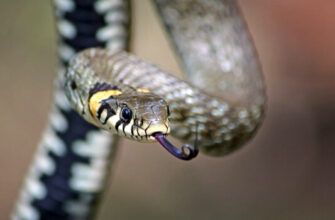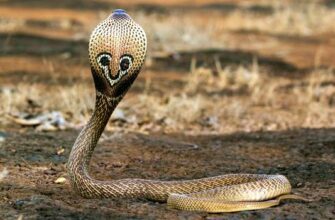Frilled Lizard (Chlamydosaurus kingii) — the brightest and most mysterious representative of the agamas. At the moment of excitement, in anticipation of enemies, fleeing from danger, the frilled lizard inflates a part of the body, to which it owes its name. A cloak or collar of a very bizarre shape resembles an open parachute. Outwardly, representatives of frilled lizards are similar to their prehistoric ancestors of Triceratops, who lived 68 million years ago on the lands of North America.
Origin of the species and description
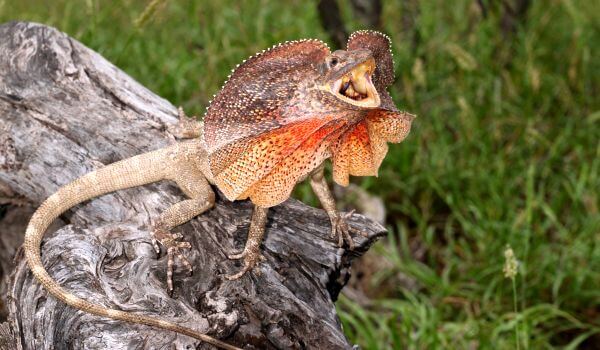
Photo: Frilled Lizard
The frilled lizard belongs to the chordate type, reptile class, scaly order. Frilled lizards are the most unusual representative of the agamas, which include 54 genera in the family, living in the territories of South-Eastern Europe, Asia, Africa and Australia. These are butterfly agamas, spiketails, sailing, Australian-New Guinean forest dragons, flying dragons, forest and comb forest dragons. People have noticed that agama lizards resemble dragons. But in fact, the frilled lizard is very similar to prehistoric herbivorous dinosaurs.
Video: Frilled lizard
Reptiles are the most ancient animals on earth. Their ancestors lived along water bodies and were practically tied to them. This is explained by. that the process of reproduction was closely connected with water. Over time, they managed to break away from the water. In the process of evolution, reptiles managed to protect themselves from drying out of the skin and developed lungs.
The remains of the first reptiles belong to the Upper Carboniferous. The skeletons of the first pangolins are over 300 million years old. Around this time, in the process of evolution, lizards managed to replace skin respiration with pulmonary respiration. There was no need to moisturize the skin all the time and the processes of keratinization of its particles began. Accordingly, the limbs and the structure of the skull changed. Another major change – disappeared & # 171; fish & # 187; bone in the shoulder girdle. In the process of evolution, more than 418 species of the most diverse species of agamas appeared. One of them — frilled lizard.
Appearance and features
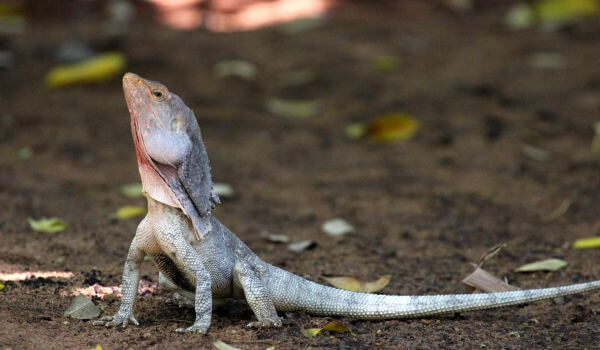
Photo: Frilled lizard in nature
The color of the collar of the frilled lizard (Chlamydosaurus kingii) depends on the habitat. Deserts, semi-deserts, fore forests, forests influenced its color. Skin color is due to the need for camouflage. Forest frilled lizards are similar in color to old trunks of dried trees. Savannahs have yellow skin and a brick collar. Lizards that live at the foot of the mountains are usually deep gray.
The average length of Chlamydosaurus kingii is 85 centimeters, including the tail. The largest frilled lizard known to science is 100 cm. Solid dimensions do not prevent representatives of the species from moving easily and quickly on four legs, running on two hind legs and climbing trees. The main attraction is the leather collar. Usually it fits snugly to the body of the lizard and is almost invisible. At the moment of excitement, in anticipation of danger, the frilled lizard inflates a part of the body, to which it owes its name.
A cloak or collar of a very bizarre shape resembles an open parachute. The collar has a leathery structure and is permeated with a network of blood vessels. At the moment of danger, the lizard inflates it and assumes a frightening pose.
Interesting fact: The open collar makes frilled lizards look like their prehistoric ancestors, who lived 68 million years ago on the lands of North America. Like Triceratops, frilled lizards have elongated jawbones. This is an important part of the skeleton. With these bones, lizards can leave their collar open, which makes them look like prehistoric lizards with large bone crests.
The color of the collar also depends on the environment. The brightest collars are in lizards living in subtropical savannahs. They can be blue, yellow, brick, and even tinted with blue.
Where does the frilled lizard live?
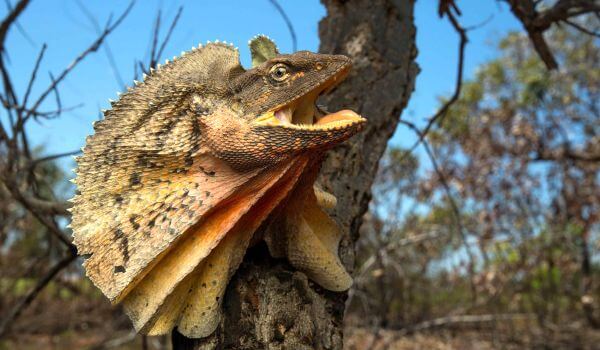
Photo: Frilled Lizard in Australia
The frill-necked lizard lives in the southern regions of New Guinea and in the north of Australia and in the south. In rare cases, representatives of the species are found in the desert regions of Australia. How and why lizards go to the desert is unknown, because their natural habitat is in a humid climate.
The lizards of this species prefer warm and humid tropical savannahs. This is a tree lizard that spends most of its time in the branches and roots of trees, in crevices and at the foot of mountains.
On the territory of New Guinea, these animals can be seen on the fertile soils of alluvium, rich in nutrients. High temperatures and constant humidity create ideal conditions for lizards to live and breed.
Interesting fact: Frilled lizard can be seen in northern Australia. The original habitat is in the Kimberley, Cape York and Arnhemland area.
It is a dry, wooded area, usually with open shrubs or grass. The local climate and vegetation differ from the fertile forests of Northern New Guinea. But local frilled lizards are well adapted to life in the hot tropics of northwestern and northern Australia. They spend most of their time on the ground among the trees, often at a considerable height.
What does the frilled lizard eat?
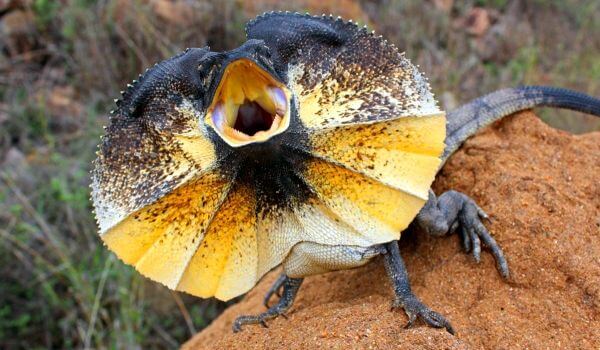
Photo: Frilled Lizard
The Frilled Lizard is an omnivore, and will eat just about anything it can find. Her food preferences are determined by her environment. The diet mainly consists of small amphibians, arthropods and vertebrates.
First of all, these are:
- Australian toads;
- tree frogs;
- narrowtails;
- fold-legged frogs;
- crayfish;
- crabs;
- lizards;
- small rodents;
- ants;
- spiders;
- bugs;
- ants;
- termites.
The frilled lizard spends most of its life in trees, but sometimes descends to feed on ants and small lizards. In her menu — spiders, cicadas, termites and small mammals. The frilled lizard is a good hunter. Tracks down food like a predator, from ambush, using the element of surprise. She hunts not only insects, but also small reptiles.
Like many lizards, Chlamydosaurus kingii — carnivores. They tend to prey on those who are smaller and weaker. These are mice, voles, forest rodents, rats. Lizards love to eat butterflies, dragonflies and their larvae. The rainforests are full of ants, mosquitoes, beetles and spiders, which also diversify the menu of cloaked lizards. The rainy season is especially favorable for lizards. At this time, they eat. They eat several hundred flying insects a day.
Interesting fact: Lizards are not averse to dine on crabs and other small crustaceans that remain after high tide in the shoreline area. Frilled lizards find shellfish, fish, and sometimes larger prey on the shore: octopuses, starfish, squid.
Character and lifestyle
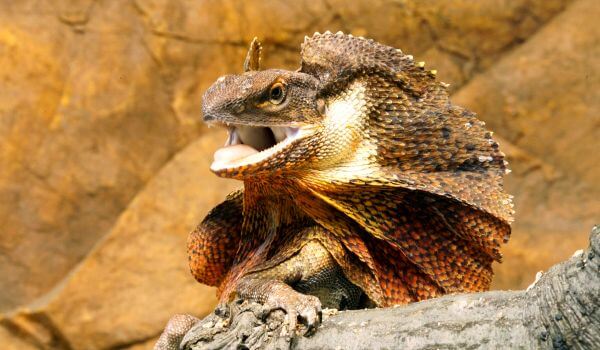
Photo: Frilled Lizard
The Frilled Lizard is considered predominantly arboreal view. They spend most of their time in the middle tier of tropical forests. They can be found in the branches and trunks of eucalyptus trees, 2-3 meters above ground level.
This is a good position for foraging and hunting. As soon as the prey is detected, the lizards jump from the tree and pounce on the prey. After an attack and a quick snack, the lizards return to their tree and resume hunting. They use trees as perches but actually hunt on the ground.
Lizards rarely stay on the same tree for more than a day. They are constantly moving in search of food. Chlamydosaurus kingii are active during the daytime. That’s when they hunt and feed. Frilled lizards are severely affected during the dry season in Northern Australia. This time falls on the period from April to August. Reptiles are lethargic and do not show activity.
Interesting fact: The lizard scares off enemies with the help of the so-called cloak. It is actually a leathery collar pierced by a network of arteries. When excited and frightened, the lizard activates it, taking a threatening posture. The collar opens up to take the shape of a parachute. The lizard manages to hold its complex shape while running, thanks to the elongated cartilaginous bones associated with the jaw.
In radius, the collar reaches 30 cm. Lizards use it as a solar battery in the morning, in order to warm up, and in the heat for cooling. The cloak is used during the mating season to attract females.
Lizards move quickly on four legs, maneuverable. When danger appears, it rises to a vertical position and runs away on two hind limbs, throwing its support legs high. To intimidate the enemy, it opens not only a cloak, but also a brightly colored yellow mouth. Makes frightening hissing sounds.
Social structure and reproduction
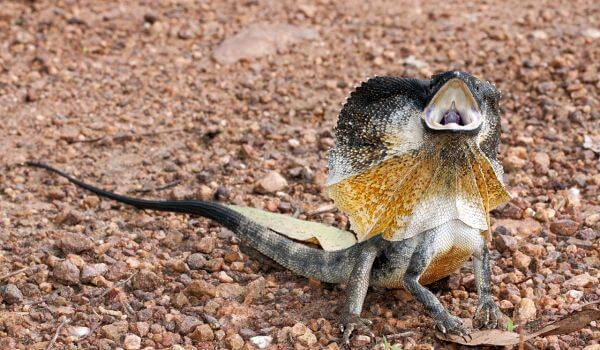
Photo: Frilled Lizard Animal
Frilled lizards do not form pairs and groups. They unite and communicate during the mating season. Males and females have their own territories, which are jealously guarded. Violation of possessions is stopped. Like everything else in the life of a frilled lizard, breeding — seasonal process. Mating takes place after the end of the dry season and lasts quite a long time. Three months from October to December are allotted for courtship, fighting for females and laying eggs.
Chlamydosaurus kingii is preparing for the mating season for a long time. The lizards eat off and accumulate subcutaneous deposits during the rainy season. Males use their coats for courtship. During the mating period, their color becomes much brighter. Having won the attention of the female, the male begins courtship. A ritual nodding of the head invites a potential partner to mate. The female herself decides to answer or refuse the male. The signal for mating is given by the female.
Egg laying takes place during the monsoon season. There are no more than 20 eggs in a clutch. The minimum known clutch is 5 eggs. Females dig holes about 15 cm deep in a dry place well warmed by the sun. After laying, the pit with eggs is carefully buried and disguised. Incubation lasts from 90 to 110 days.
The sex of the future offspring is determined by the ambient temperature. At higher temperatures, females are born, at medium temperatures – up to 35 C, lizards of both sexes. Young lizards reach sexual maturity by 18 months.
The natural enemies of frilled lizards
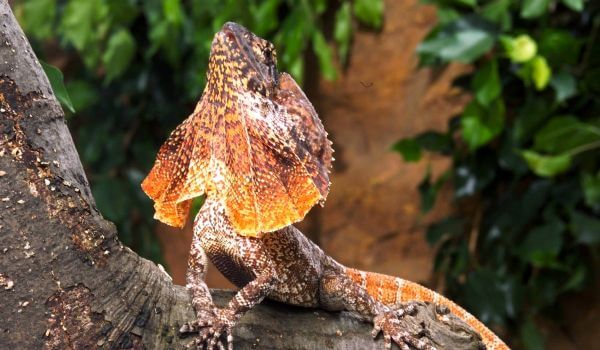
Photo: Frilled lizard in nature
Fried-nosed lizard the lizard has impressive dimensions. About a meter in length and with a significant weight of about a kilogram — this is a pretty formidable adversary. In the natural environment, the lizard has few enemies.
The most common enemies of the frilled lizard are large snakes. For the southern coast of Papua New Guinea, these are the reticulated snake, green monitor, Timor monitor, green python and taipan. Frilled lizards are preyed upon by the New Guinean harpy, owls, Australian brown hawk, kites and eagles. Along with birds and snakes, dingoes and foxes prey on frilled lizards.
Drought can be attributed to natural hazards that can harm the frilled lizard. This refers to the Australian range. Lizards of this species do not tolerate drought well. They decrease their activity, skip the mating season, and are not even able to open their cloak to protect themselves from attack.
Due to the extreme habitat, the lizard’s habitat is not subject to human expansion. Reptile meat is not suitable for food, and the size of the skin of an adult is small for dressing and making accessories. That is why the frilled lizard does not suffer from human interference.
Population and species status
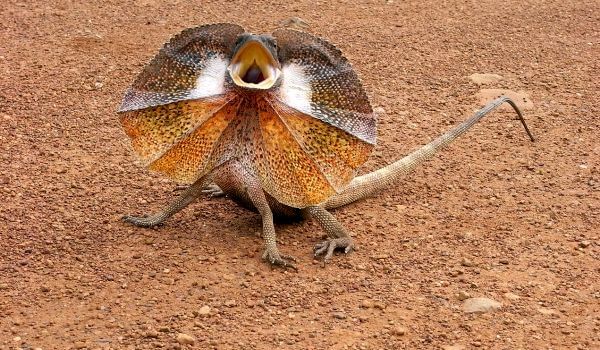
Photo: Frilled Lizard Australia
The frilled lizard is in G5 status – safe for the species. Chlamydosaurus kingii is not endangered or endangered. The population was not counted. Zoologists and conservation communities do not consider it appropriate to carry out this procedure. The species is not listed in the Red Book and is prosperous.
The local population demonstrates loyal behavior towards these amazing lizards. The image of the frilled dragon was printed on the Australian 2 cent coin. The lizard of this species became the mascot of the 2000 Summer Paralympic Games, and also adorns the coat of arms of one of the Australian Army units.
Fun fact: Frilled lizards are popular as pets. But they breed very poorly in captivity, and, as a rule, do not produce offspring. In terrarium conditions, they live up to 20 years.
The frilled lizard is the largest species of lizard in Australia. These are diurnal animals. They live and hide in the foliage of trees. For hunting, mating and creating masonry, they descend to the ground. They move equally well on both four and two legs. They develop speeds up to 40 kilometers per hour. In wildlife, life expectancy reaches 15 years.

